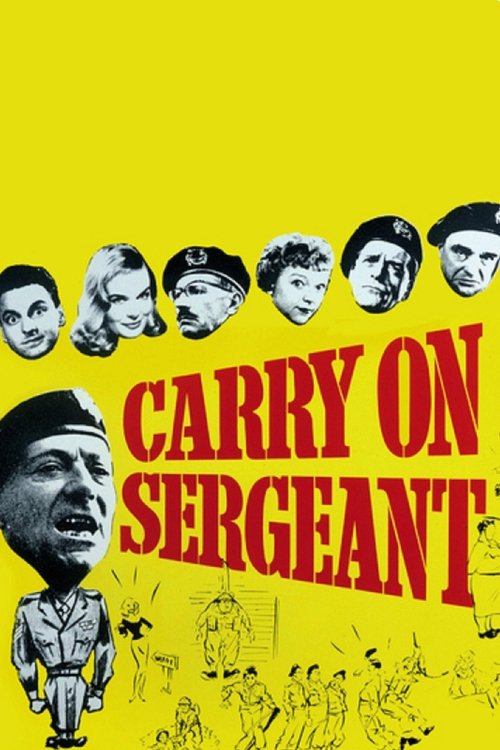To get a sense of a movie franchise you often have to go all the way back to its early beginnings. Dr. No might lack the gadgets, but James Bond is undeniably James Bond. The optimism and heart of Star Trek still shines through the lens flares and explosions of Into Darkness.
This is not true for Carry On Sergeant. There may be spoilers. Can you spoil a nearly sixty-year-old movie? Let’s see.
The jokes are tame and the slapstick is restrained. Hartnell brings a dignified gravitas to the movie, marking the only case where the phrase “dignified gravitas” is applicable to Carry On. To be sure, James Bond had been explored through several novels prior to 1962 and Gene Roddenberry was creating a television series. I don’t think Peter Rogers and Gerald Thomas had a plan beyond “let’s make a military comedy, those are hot now.”

Of the eventual regulars, Charles Hawtrey, Hattie Jacques, and the two Kenneths (Connor and Williams) are here. But they are far from being central characters. Come to think of it, it’s kind of hard to tell where the center is.
A bunch of improbable soldiers get drafted, and it’s up to Hartnell’s General Grimshawe to whip them into shape. There’s Charlie (Bob Monkhouse), who forgot to file for a deferment and was therefore called up on his wedding day. James (Kenneth Williams) is an arrogant snob, Horace (Kenneth Connor) is a master hypochondriac, Herbert (Norman Rossington) is a three-time failure in basic training, Peter (Charles Hawtrey) is an effeminate klutz.
Hartnell, for his part, plays against the drill instructor stereotype by being perfectly reasonable — an idea that must have seemed funny to the writers after a few beers, but leaves Hartnell as the straight man in a farce, a sort of prototypical Bob Newhart.
As the movie opens, we set up for a story about how Charlie and his new wife Mary (Shirley Eaton) merge honeymoon with basic training. The relationship has no future, of course; six years later, Eaton plays a golden corpse in Goldfinger. But script writer Norman Hudis makes the rookie mistake of resolving a comedic situation through characters making perfectly logical and rational decisions, taking Charlie out of the action altogether — at least as far as the film is concerned.

“It’s a third of the way through the film and my subplot is resolved. What do I do now?”
The next obvious plot is the “band of misfits” : that’s the one where the team is either whipped into shape or learns how to use their eccentricities to their advantage. Hudis seems to want to go this route, but he gets distracted by a second rom-com plot along the way. The movie basically ends with the platoon choosing to ace every test because the Sarge has actually been very nice to them all along. It’s like Hudis is depending on me falling asleep in the middle.
Plot has never been Carry On’s selling point, I know. But if you are not going to give your star any jokes, you need some plot to carry things along.
Wikipedia tells me the film was a commercial success, making back about seven times its original budget. Competing with it that year in the UK were Dracula (the first outing in the Hammer franchise for Christopher Lee and Peter Cushing) and The Crawling Eye, which would be the first Comedy Central Mystery Science Theater episode. William Hartnell would become the First Doctor in 1963. Bob Monkhouse would go on to be a famous British game show presenter. And Charles Hawtrey would play the same character in twenty-two more Carry On films.

